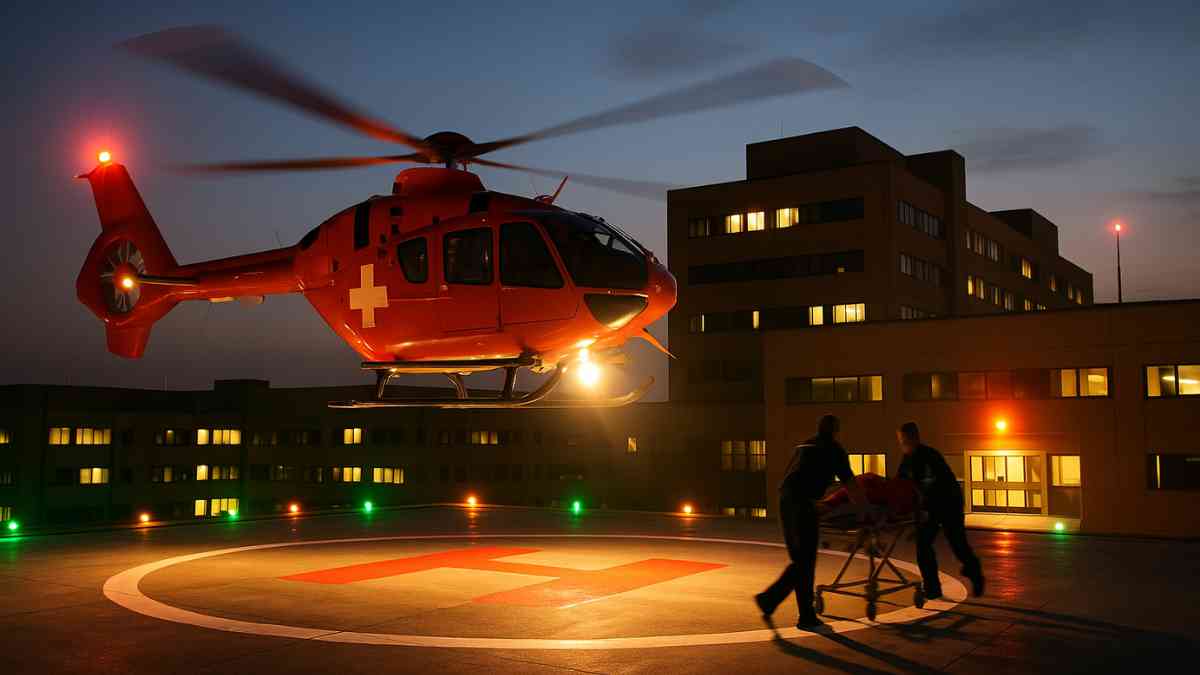Loyola University Medical Center Heliport: The Lifesaving Gateway in Maywood

In the heart of Maywood, Illinois, an often-overlooked but crucial facility operates quietly and efficiently—the Loyola University Medical Center Heliport. While it might seem like just another concrete platform, this heliport plays an indispensable role in saving lives. In emergency medicine, every second counts. For critically ill or injured patients, air transport can be the difference between life and death, and the heliport at Loyola ensures those vital minutes are not wasted.
This article explores the history, infrastructure, operations, and vital importance of the Loyola University Medical Center Heliport. It delves into how this modest structure supports a major academic hospital’s mission to deliver world-class care quickly and efficiently.
The Strategic Location of Loyola University Medical Center
Loyola University Medical Center (LUMC) is a prominent academic medical institution in Maywood, a suburb west of Chicago. With a focus on research, teaching, and patient care, the center sees thousands of critical cases each year. The heliport, situated directly on the hospital grounds, allows for the immediate transfer of patients from the air ambulance to the emergency department, operating rooms, or intensive care units within minutes.
Why a Hospital Heliport Matters
Hospital heliports are not luxuries—they are lifelines. In many trauma cases, the “golden hour” is the period within the first 60 minutes after injury, where prompt medical treatment significantly increases survival chances. Air ambulances can bypass road congestion and geographic barriers, especially in a bustling metropolitan area like Chicago. The Loyola University Medical Center Heliport facilitates this rapid transit seamlessly.
Technical Specifications and Features
The heliport at LUMC may appear simple, but it adheres to strict Federal Aviation Administration (FAA) regulations. Officially designated with the FAA location code “0IL1,” this private heliport is:
- Surface Type: Concrete
- Dimensions: 50 x 50 feet (approx. 15 x 15 meters)
- Lighting: Equipped with perimeter lighting, floodlights, and a beacon for night operations
- Communication: Operates on a dedicated radio frequency to coordinate with incoming aircraft
- Ownership: Privately owned and operated by the Loyola University Health System
While the facility does not have a control tower, it maintains communication with incoming medevac units to ensure safe landing and takeoff procedures.
Integration with Emergency Services
The heliport is not just a landing pad; it is an integrated part of a highly coordinated emergency system. When an emergency occurs that requires airlifting, the system is mobilized instantly:
- Air Dispatch Receives Call: EMTs or rural hospitals notify Loyola’s air team of the critical patient.
- Flight Path Is Cleared: The helicopter takes off with a medical crew onboard.
- Pre-Arrival Prep at Hospital: The emergency or trauma team is notified and begins prepping.
- Immediate Patient Transfer: Upon landing, patients are swiftly transported to critical care areas.
This seamless flow is made possible through constant training, coordination, and communication between air ambulance providers, local EMS, and hospital staff.
The Role in Organ Transplantation and Specialized Care
Beyond trauma cases, the heliport is also instrumental in organ transplant logistics. Organs must be transplanted quickly after harvesting, and air transport ensures minimal delay. Loyola’s reputation as a leading transplant center benefits significantly from this rapid transfer capability.
Additionally, the heliport allows for the transfer of neonatal and pediatric critical cases, high-risk cardiac patients, and victims of large-scale emergencies or natural disasters.
Impact on Rural and Underserved Areas
Rural hospitals often lack the specialized care or surgical expertise that facilities like LUMC offer. The heliport acts as a gateway for patients from remote Illinois regions and even neighboring states. Helicopters transport them in where time-sensitive interventions like neurosurgery, cardiology, or advanced trauma care are available.
This connection dramatically improves survival rates and long-term outcomes for individuals who would otherwise have limited access to such care.
Training and Safety Protocols
Maintaining a hospital heliport requires stringent safety measures. Loyola’s heliport is compliant with FAA safety standards, and its staff undergo routine emergency drills, fire safety training, and landing procedure protocols.
Fire suppression systems, secure perimeter zones, and weather monitoring tools all contribute to its smooth operations. Each incoming flight is monitored, and strict safety checks are done before and after landing.
Community Perception and Noise Management
While helicopter noise is an unavoidable side effect, Loyola University Medical Center has implemented several noise-reduction strategies. These include:
- Limiting night landings to extreme emergencies
- Using quieter aircraft models where possible
- Coordinating with local residents through community outreach programs
The community largely supports the heliport, recognizing its vital role in saving lives, especially during emergencies where every moment is crucial.
Future Upgrades and Expansion Possibilities
Given the rising reliance on aerial medical transport, Loyola has explored upgrading the heliport with better lighting, expanded size for dual chopper landings, and real-time weather telemetry. These improvements aim to increase efficiency, especially during mass casualty events or regional emergencies.
Moreover, integration with drone-based medical deliveries is a future possibility, particularly for transporting small medical supplies, blood samples, or medications.
Real Stories: When Seconds Meant Survival
A 45-year-old stroke patient from southern Illinois was airlifted to Loyola within 20 minutes and received clot-busting treatment just in time to prevent permanent brain damage. In another instance, a pediatric burn victim from Indiana received life-saving surgery at Loyola’s specialized burn unit after being airlifted in under 30 minutes.
These stories are testaments to how crucial the heliport is—not just in theory, but in real, lived experiences.
Conclusion
The Loyola University Medical Center Heliport stands as a powerful example of how infrastructure, when intelligently integrated with healthcare, can save lives. While it may seem like just another platform to land a helicopter, it is in fact a critical gateway to hope, healing, and survival.
By shortening the time between crisis and care, this heliport ensures that geography never becomes a barrier to receiving world-class treatment. As emergency medicine continues to evolve, facilities like this will play an even greater role in shaping the future of healthcare delivery.
Discover how Loyola’s heliport helps save lives daily.



